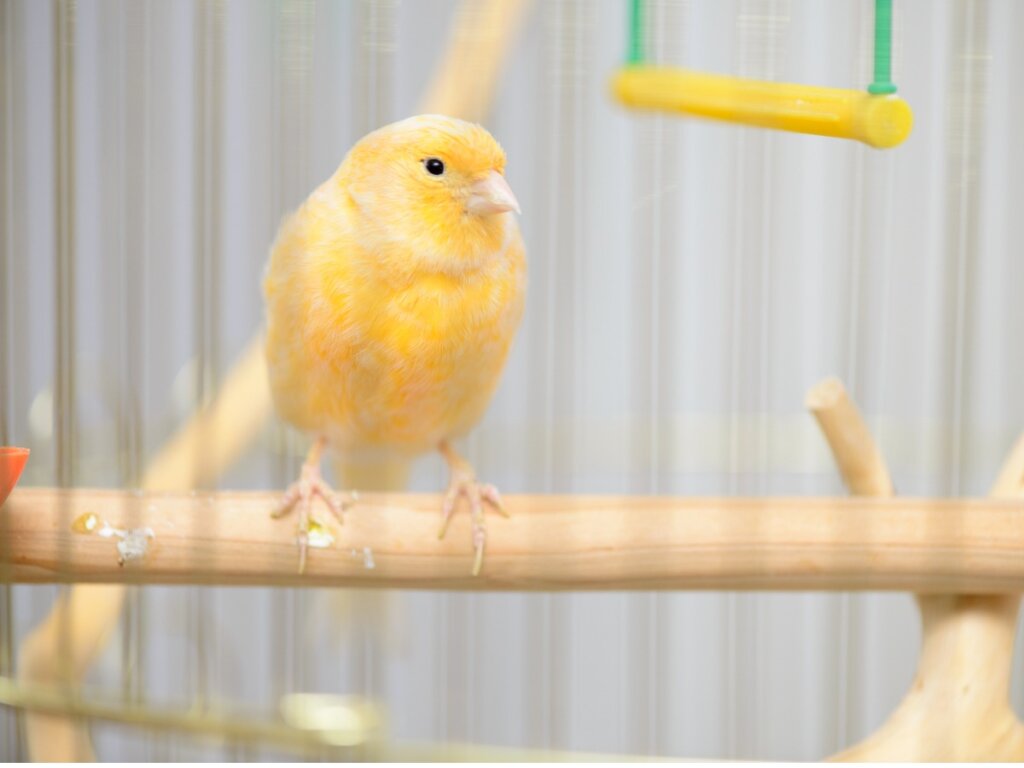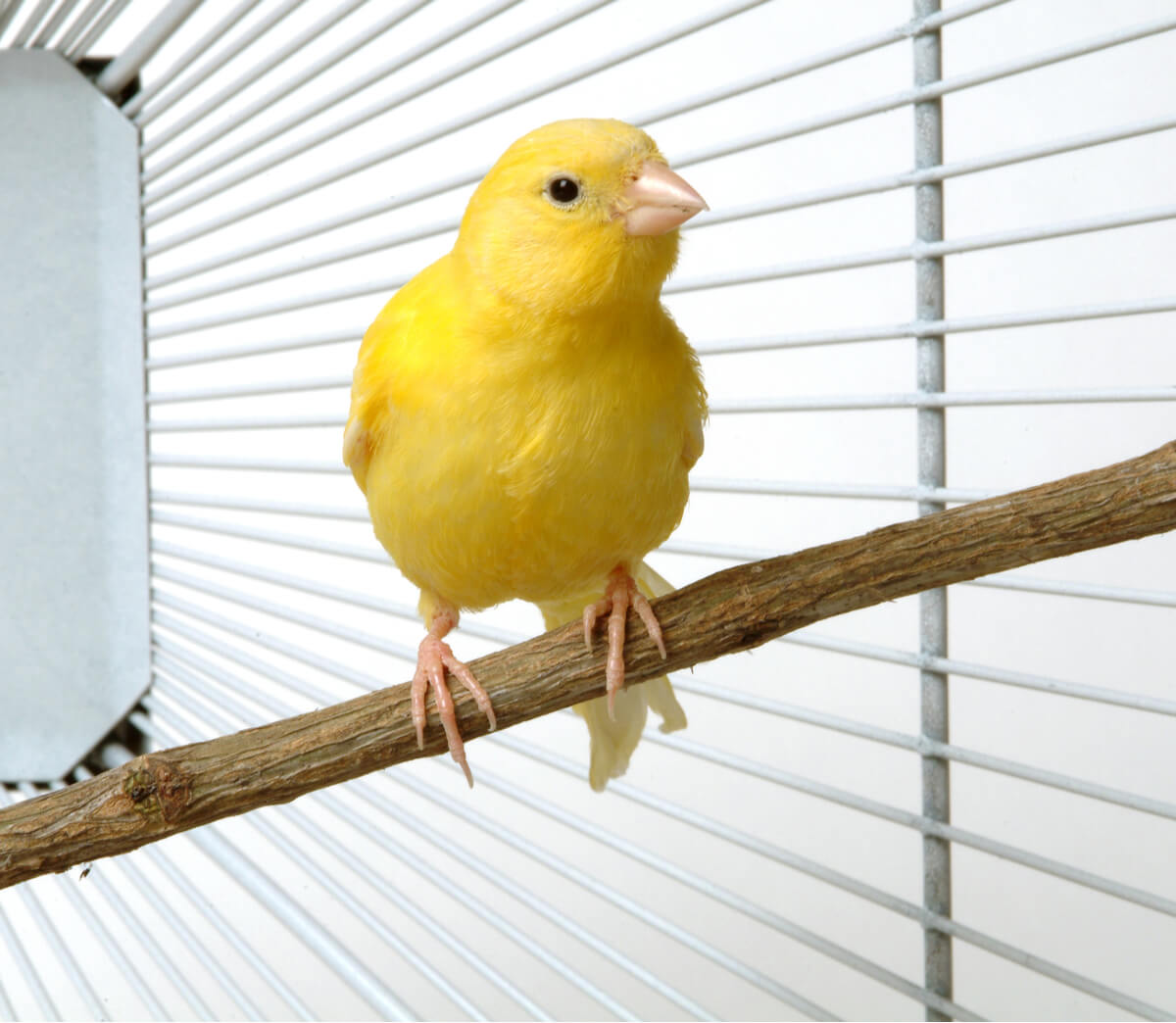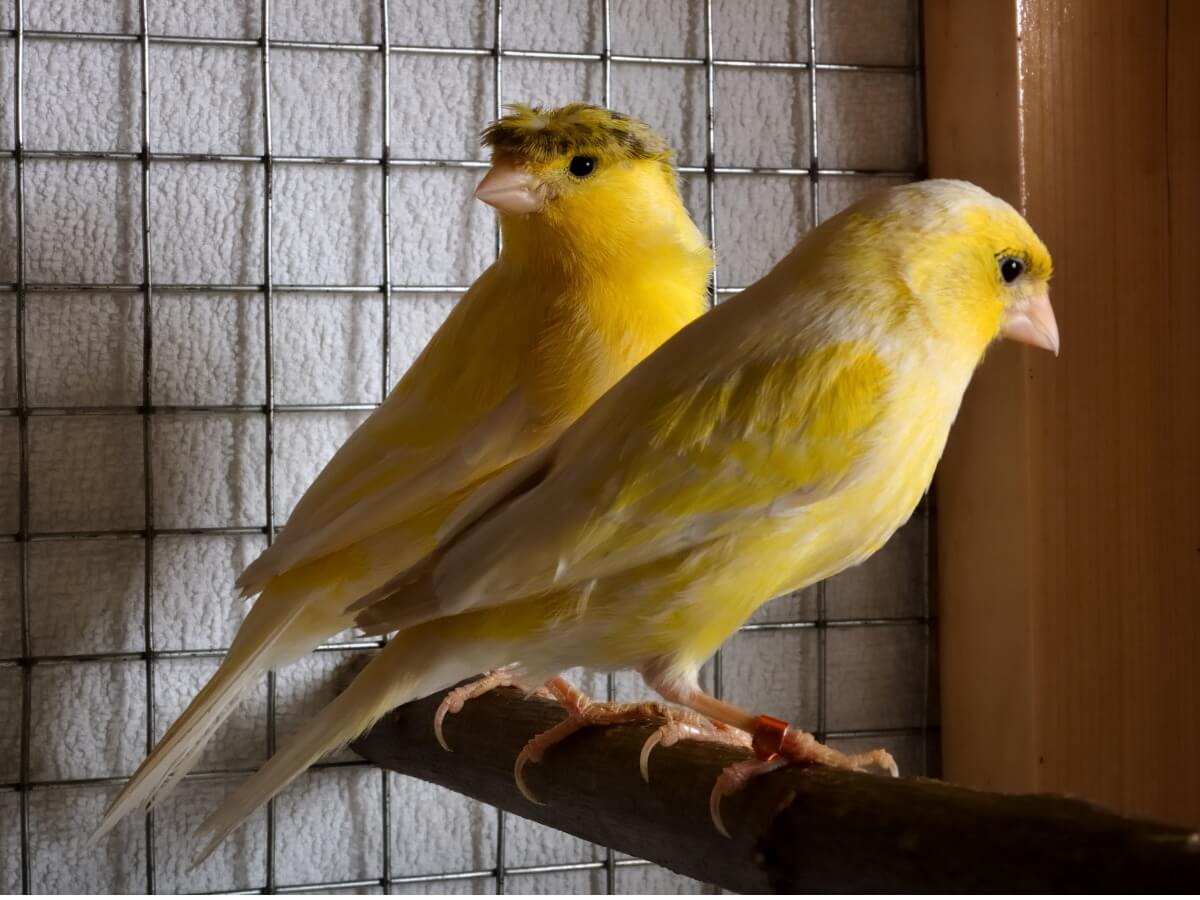The Reasons Why a Canary Fluffs Up Its Feathers

If you have a canary (Serinus canaria domestica), then you may have noticed certain behavior that you don’t understand. Birds are much more difficult to interpret ethologically than other pets, as they’re genetically more distant from us than a dog and a cat, for example. If you’re here because your canary swells up and fluffs up its feathers and you’re worried about it, then we’ve got answers.
Fluffing up the feathers can be a sign of many physiological events, some of them normal and others of a pathological nature. Read on if you want to find out more about the subject.
Why do birds puff up and fluff their feathers?
Before entering the world of canaries, we need to explain why birds, in general, adopt this behavior. The fluffing of feathers and body swelling responds to the need to thermoregulate with respect to the environment.
Simply put, birds adopt this behavior when they’re cold. To avoid losing more heat than necessary, birds create small “air pockets” between their feathers, hollowing them out, which isolates them a little more from the external environment. As they’re endothermic animals (they generate their own metabolic heat), they can increase their body temperature with mechanisms like this.
As studies indicate, birds have many more mechanisms to prevent heat loss: they huddle under their own wings, reduce circulation to the coldest areas of the body (the legs), and move towards sources close to the rays of the Sun.

Do birds fluff their feathers when they are angry?
Many mammals (such as cats, monkeys, and mice) swell up to appear larger, through a mechanism known as piloerection. This makes clear evolutionary sense. They’re trying to show that they’re angry or in danger and “grow bigger” to intimidate potential predators.
This behavior can also be observed in birds, especially those of the order Psittaciformes (parrots, cockatoos and lovebirds, for example). Anyway, you must remember that the canary is a Passerine or songbird. In these birds, which are smaller and with less behavioral complexity, the ruffling of feathers doesn’t correspond to a sign of anger.
Why your canary fluffs up its feathers
Now, you know why birds ruffle and fluff up their feathers in the natural environment. In the following lines, we’re going to explain the possible scenarios in which a domestic canary performs this behavior.
1. It’s cold
If your canary is constantly puffing up and fluffing its feathers during the fall or winter, it’s most likely cold and trying to thermoregulate its internal temperature. The ideal temperature for these animals is between 18 and 22° C, although they can also withstand drops to 12° C. If temperatures drop below 8° C, they require special diets.
If your canary lives in an outdoor cage and the temperatures are very low during the winter times, the best thing you can do is move it into the house and keep the bird in a temperate environment. The cold doesn’t only cause the canary to fluff up, but it can also favor the appearance of infectious diseases.
2. It’s preening
The uropygeal gland, also known as the “grooming gland” or “oil gland,” is a structure found in most birds. It’s responsible for secreting an oily substance used for grooming and waterproofing the feathers, and, as you can imagine at this point, it’s also present in canaries.
If your canary fluffs up its feathers and at the same time touches the dorsal area near the tail a lot with its beak (at the level of the last caudal vertebrae), it’s most likely that it’s preening and filling its feathers with oil. This is also a sign that it’s feeling calm.
3. The canary is sick
Fluffing up is a normal physiological event and can be seen many times throughout the day. What isn’t at all usual is that a canary fluffs up its feathers all the time. In general, when a bird stays on one leg all day with ruffled feathers, it’s most likely to be ill.
Other signs of illness in canaries that should be taken into account are the following:
- The canary stops singing outside the molting season.
- Feathers fall out outside the molting season.
- It stays tucked up on one leg most of the day.
- It stops eating and drinking.
- Trouble breathing with audible wheezing.
- It has purulent secretions in any part of the body or diarrhea.
Fungal, viral, bacterial diseases, and asthma are some of the illnesses that can manifest with part of the aforementioned symptoms. Needless to say, all these clinical signs warrant an immediate visit to the vet, as the canary’s life is in danger.

As you may have seen, the fact that a canary fluffs up its feather and swells up on a regular basis isn’t a problem, as it’s part of its grooming ritual or a way of storing heat. However, if this situation is constant and they show other symptoms, then professional attention is necessary, as the bird is sick.
All cited sources were thoroughly reviewed by our team to ensure their quality, reliability, currency, and validity. The bibliography of this article was considered reliable and of academic or scientific accuracy.
- Weathers, W. W. (1981). Physiological thermoregulation in heat-stressed birds: consequences of body size. Physiological Zoology, 54(3), 345-361.
- Whittow, G. C., & Tazawa, H. (1991). The early development of thermoregulation in birds. Physiological Zoology, 64(6), 1371-1390.
- Smit, B., Harding, C. T., Hockey, P. A., & McKechnie, A. E. (2013). Adaptive thermoregulation during summer in two populations of an arid‐zone passerine. Ecology, 94(5), 1142-1154.
- Ruuskanen, S., Hsu, B. Y., & Nord, A. (2021). Endocrinology of thermoregulation in birds in a changing climate. Molecular and Cellular Endocrinology, 519, 111088.
